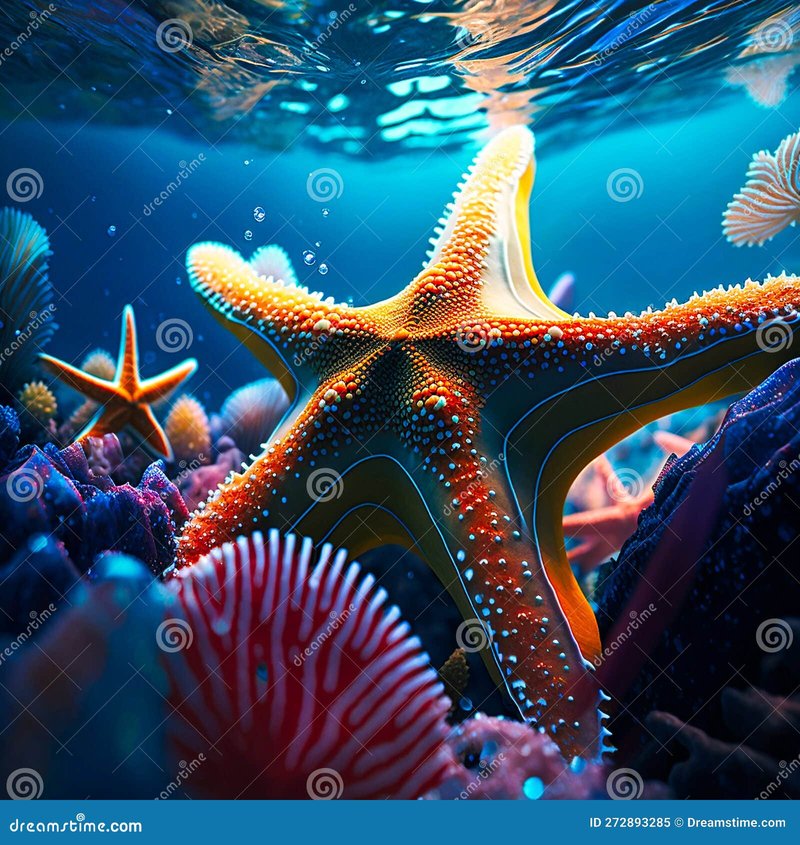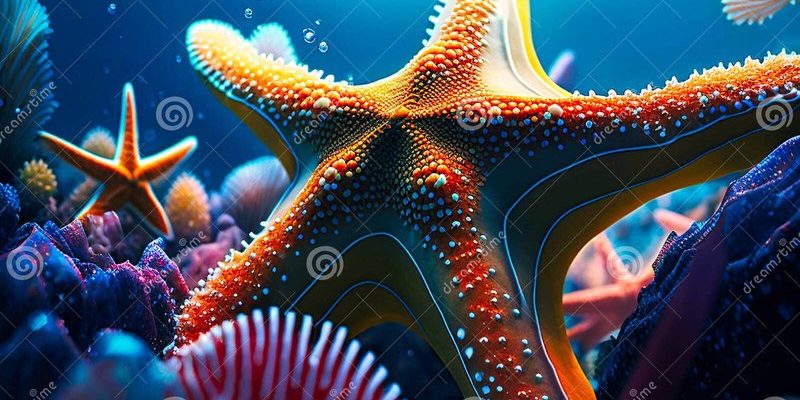
Think of a starfish as a quirky, underwater traveler. If you picture it crawling along the ocean floor, using its myriad of tube feet to explore, you start to grasp its daily adventures. Here’s where things get interesting—these creatures communicate and navigate in ways that might surprise you. So let’s dive into the underwater world of starfish communication and navigation.
Starfish Anatomy: The Tools of Navigation
To understand how starfish navigate, it helps to know a bit about their anatomy. Starfish have a unique body structure that sets them apart from other sea creatures. With a central disc and multiple arms (or rays), they have a setup that allows them to reach out and explore their surroundings.
Their key navigational tools are their tube feet. These small, flexible appendages are lined with tiny suction cups. When a starfish wants to move, it contracts muscles in its tube feet, allowing them to create suction against the surface of rocks, sand, or coral. You might think of these tube feet as tiny explorers, scouting the ocean floor for food and hiding spots.
What’s more interesting is their water vascular system, which is a network of canals that helps control the movement of these tube feet. The hydraulic system allows the starfish to expand and contract their feet, giving them the ability to grip and maneuver through various surfaces. It’s like having a built-in hydraulic pump! This allows starfish to navigate through rocky terrain and even climb up vertical surfaces.
How Starfish Navigate Their Environment
Starfish have a pretty smart way of getting around, and they do it without a brain! Instead, they have a nerve net and a central disc that helps them sense their environment. This means they can react to changes around them, like when a predator is nearby or when they find food.
Imagine wandering through a crowded market without a map—you’d rely on your instincts and observations. Starfish do something similar. They use light-sensitive cells in their skin to detect differences in light and shadow, helping them understand their surroundings. This allows them to find hiding spots and avoid danger.
In addition, starfish can also sense chemical signals in the water. When they’re on the hunt for food, they can detect morsels from quite a distance using their ability to taste the water. This is akin to how we follow our nose when there’s something delicious cooking nearby. Starfish can easily navigate toward their favorite meals, such as mollusks and other small sea creatures.
Communication Among Starfish
You might think that communication is exclusive to mammals or birds, but that’s not the case. Starfish have their own means of interaction. They don’t rely on sounds; instead, they communicate through chemical signals and physical touch. When they want to attract a mate or signal for help, they release hormones into the water, creating a kind of underwater messaging system.
For a starfish, sending a chemical message is like sending a text. They can signal their presence to potential mates or even warn other starfish about nearby predators. Imagine getting a notification that says, “Danger ahead!” That’s what it’s like for these creatures, who can detect these subtle messages with their sensory cells.
Moreover, when starfish come into contact with each other, they can share information about their environment. It’s a little like when friends gather to chat about the best food spots in town. This interaction can help starfish find food sources or identify safe spaces in their habitat.
Starfish Movement Patterns: Exploring the Ocean Floor
The movement patterns of starfish can be pretty fascinating to observe. When they travel, it’s not just a mindless crawl; each step is calculated. A starfish moves by coordinating its tube feet in a rhythmic dance. This allows for efficient travel, whether they’re hunting for food or exploring new territories.
As they traverse the ocean floor, starfish often exhibit territorial behavior. They may find a rocky crevice or a coral formation and claim it as their home base. This is their way of securing food and avoiding competition from other starfish. It’s like staking a claim on a cozy spot in your favorite café.
Starfish also have impressive adaptability. When faced with challenges like rough currents or rocky surfaces, they slow their movements or adjust their grip. This adaptability is a survival skill that ensures they can thrive in various marine environments, from tidal pools to deep-sea habitats.
Learning from the Starfish: Takeaways and Inspiration
So, what can we learn from the navigation and communication skills of starfish? For starters, they remind us of the importance of being attuned to our environment. Just like starfish use their senses to find food and navigate, we too can benefit from being aware of our surroundings and the subtle cues around us.
Their ability to communicate chemically is a lesson in the value of indirect communication. Sometimes, what we say matters less than how we say it, and being aware of non-verbal cues can enhance our relationships, just like it does for starfish.
Lastly, we can draw inspiration from their adaptability. Life often throws unexpected challenges our way, and like starfish on the ocean floor, we can learn to adjust, find new paths, and remain open to exploration. Embracing change can lead us to discover new opportunities and possibilities.
The Fascinating World of Starfish
Starfish may seem simple at first glance, but they lead complex lives filled with fascinating adaptations for navigation and communication. They remind us of the beauty of nature’s design and the hidden wonders beneath the ocean’s surface.
If you ever get the chance to observe these creatures up close, take a moment to appreciate their unique abilities. From their charming tube feet to their chemical conversations, starfish are a testament to the wonders of evolution and survival in the wild.
In conclusion, understanding how the starfish navigates its world and communicates with others adds another layer to our appreciation of these incredible creatures. They’re not just colorful inhabitants of the sea; they’re skilled travelers and communicators in their own right. So next time you see a starfish, remember the little navigator with big skills swimming through life!

